From the Top: Chris Cocalis
 | When I get into something, I tend to become a bit obsessed with it. Once I went on my first mountain bike ride, I was hooked for life. |
Pivot founder Chris Cocalis is one of the sharpest tools in the mountain bike shed. Count the names of entrepreneurs who have been designing and making mountain bikes since the sport's pre-suspension days and who have managed to remain both technologically relevant and competitive at the industry's highest level, and you won't get past the fingers of one hand. Cocalis' business education and unbridled passion for bikes are an equally rare combination in the bike biz - and if that were not enough, the man is one of the hardest workers I have met.
I have known Chris since the beginning of his career and over time he has become both a friend and one of the first people I consult with when I am fleshing out future trends or wrestling with an industry-wide technological issue. I jokingly call him the "Millimeter Man" because he is a pathological perfectionist who has no problems with completely revising a part to increase its stiffness by two percent, or to squeeze out another millimeter of clearance here and there. Chris is a damn good rider too, which helps to keep him grounded while he wrestles with designing bikes, running an international business, and frequent flights to Asia to maintain relationships with his manufacturers there. Cocalis will gush about his bikes at any opportunity, but behind the pride is a curious, self-effacing family man who is the first to admit that his supporters and co-workers are responsible for much of his success story. - RC
 Give us a description of your personality.
Give us a description of your personality.Oh, I didn't realize this was a Dr. Phil style interview! I would say that I am fairly serious, driven, and competitive. I am a bit of a perfectionist (that may be slightly understated). I also like to have a good time and joke around. I take what we do seriously, but I don't take myself too seriously.
 How would your key employees and manufacturing partners describe you?
How would your key employees and manufacturing partners describe you? My employees would certainly say that I push hard and expect a lot, but I would not ask anyone to do what I would not be willing to do myself.
I think that most of our vendors would say that I am extremely tough and expect a lot, just as our customers expect from us. They would also say that we have brought positive changes to their capabilities and processes. I expect achievable perfection and push them hard to be better – very often, we show them how to get there. Pivot is always striving to do things that have not been done before, both in terms of innovation and quality standards. I think the majority of my vendors would also say that I am a good friend. I have great long lasting partnerships with the companies we work with. I have the utmost respect for their knowledge and capabilities and value our strong relationships, without which, we could not do what we do.
 You have been making bicycles and parts since you were in college. What got you started as a manufacturer?
You have been making bicycles and parts since you were in college. What got you started as a manufacturer? I made my own skateboard decks in high-school and built my own snowboard in 1984. I even built a single-seat hydroplane speedboat in 1985. I've always liked to create new things from scratch and it’s just my nature to analyze everything.
I started racing BMX when I was 13, so I was there through the heyday and the experienced the evolution of BMX components first hand. Over my BMX career, I broke a lot of parts and got to see the sport slowly evolve and the durability of the parts increase dramatically. When I started riding mountain bikes in 1987, it was like starting all over again. Everything was breaking in the same way. I wanted stronger parts, but I was also never satisfied with what was out there.
When it came to the first mountain bike parts, the bottom bracket spindle was one of my first projects. I was breaking them with regularity so I worked on a design that moved the bearings farther outboard and used two bearings per side to support the spindle almost to the edge of where the taper started (spindles were tapered back then). I made the spindle larger diameter as well. I had a local machine shop make these for me out of titanium and I used them mostly for myself but also sold some to local shops in both Phoenix and the Chicago area.
I also built my first frame around this time. It was called the Sun Eagle Bicycle Works Talon and was featured in a 1988 issue of Mountain Bike Action article entitled: "Bikes of the Future." It was featured right alongside two Mantis models and the Nishiki Alien. For those who don't know, all three of those were all bikes designed by Pinkbike's own Richard Cunningham, so I was excited to be featured right alongside the best in the sport.
I also built my first frame around this time. It was called the Sun Eagle Bicycle Works Talon and was featured in a 1988 issue of Mountain Bike Action article entitled: "Bikes of the Future." It was featured right alongside two Mantis models and the Nishiki Alien. For those who don't know, all three of those were all bikes designed by Pinkbike's own Richard Cunningham, so I was excited to be featured right alongside the best in the sport.
 What motivated you to make mountain bike frames back then?
What motivated you to make mountain bike frames back then? When I get into something, I tend to become a bit obsessed with it. Once I went on my first mountain bike ride, I was hooked for life. I was managing two bike shops while in college and spent all my spare money on bike gear. For me, designing, developing and building the equipment equals the fun of riding. My first mountain bike was a top of the line Nishiki Pinnacle. I buckled the downtube in the first month of owning it. After that, I had a Fat Chance and an original Yeti FRO. I talked my friends into getting different bikes so we could check them out. One of my friends bought a Bontrager, one bought a filet brazed Ritchey P23, and another friend got an original Merlin Titanium frame. There were things I loved about all these bikes but none were exactly what I wanted. I also kept a poster of the original Nishiki Alien on my dorm wall and really wanted one of those, but the bike was impossible to get ahold of at the time, so instead, the first frame I built was an elevated chainstay bike. I still have that first frame.
 You always seem to have a silent partner, or a tightly knit group of associates who are devoted to your cause. How do you get so lucky?
You always seem to have a silent partner, or a tightly knit group of associates who are devoted to your cause. How do you get so lucky? There are times when I have been lucky and once when I wasn't (but it all worked out for the best). There have certainly been a few key people that made a big impact on my life. When I was in college, there were two of us that started Titus (myself and Mark Zepeda - a titanium welder and fabricator). Mark's boss (Larry Richmond) saw what we were doing and wanted to be a part of it. Around the same time, I was finishing up my degree and my thesis director (and then the head of Arizona State University's accounting department), Hal Reneau. He was a cyclist that got very excited about what I was doing and really pushed me to pursue my dream. He invested in me with proceeds from a new book he was writing. I would not be where I am today without these guys.
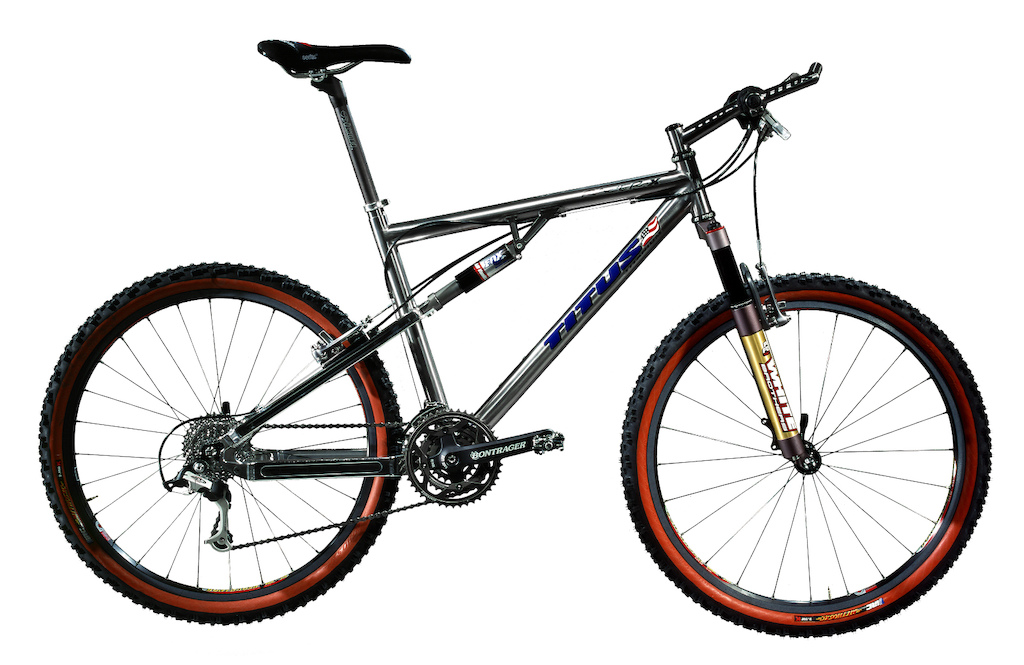
Shortly after Cocalis founded Titus, he became one of the first builders to join the full-suspension cross-country movement. The titanium Racer X used an aluminum version of Horst Leitner's four-bar "MacPherson strut" rear suspension. Chip Simons photo
In the case of Hal and Larry, as well as the people I am involved with today, my passion and drive for what I want to do is really strong. They believed in me and wanted to be a part of what I was doing. At Pivot, we have several small investors and business friends that I have developed close relationships with over the years. The people who really helped make Pivot happen are Tim Louis and a couple close friends at BH bikes. I met Tim as a Vyatek investor when we partnered with them at Titus. BH was one of my largest distributors (for Titus) and handled Spain, Portugal and France. They were really happy with how I worked with them at Titus and wanted to continue to work with me when I left. They also wanted to enter the US with BH bikes.
We launched BH Bikes USA in 2007 alongside Pivot and grew the road business in the US for BH successfully and then sold BH USA back to them a couple of years ago so that they could develop the e-bike market in the US and we could focus on Pivot. Tim has been an incredible friend and supporter. In addition to his involvement with Pivot, he is involved in so many philanthropic activities and charities that it would be impossible to name them all. He is now head of the board for the Arizona NICA league (of which Pivot is the title and founding sponsor) and he is an incredible athlete. If you ever get a chance to ride with him, make sure you take him on something really technical as it’s the only way to slow him down. He really likes technical riding.
 When did you officially found Titus?
When did you officially found Titus?
We started building some titanium parts in the garage in 1989 and I officially incorporated Titus in 1990.
 When did you officially found Titus?
When did you officially found Titus? We started building some titanium parts in the garage in 1989 and I officially incorporated Titus in 1990.
 You were one of the first adopters in the dual-suspension cross-country movement, and later, a pioneer who ushered in the long-travel trailbike concept. Did you get any resistance from mainstream riders and journos?
You were one of the first adopters in the dual-suspension cross-country movement, and later, a pioneer who ushered in the long-travel trailbike concept. Did you get any resistance from mainstream riders and journos?Either I can't remember getting any resistance or I just chose not to listen. I met Horst Leitner (AMP Research) in 1990. We were building a new titanium full suspension bike model for Univega and the project manager left Univega to become the production Manager at AMP. We had become friends, and so I drove to California to see him in his new position and to see AMP. They were full steam ahead on building the original Mongoose Amplifier and the similar AMP versions of the first Horst-Link bikes. I was intrigued by the cleanliness of the design and wound up taking a rear assembly and shock back with me to build our first 4-bar-link bike. It was super flexy, but had some incredible attributes. I did a lot of work to improve stiffness and we were really able to take the design to the next level early on. Seeing as the Horst-Link is still the most widely used suspension design in the world over 25 years later, I think that I was at the right place at the right time to meet Horst when I did and be one of the first to work with his design. It gave us a platform to apply my ideas with great results.
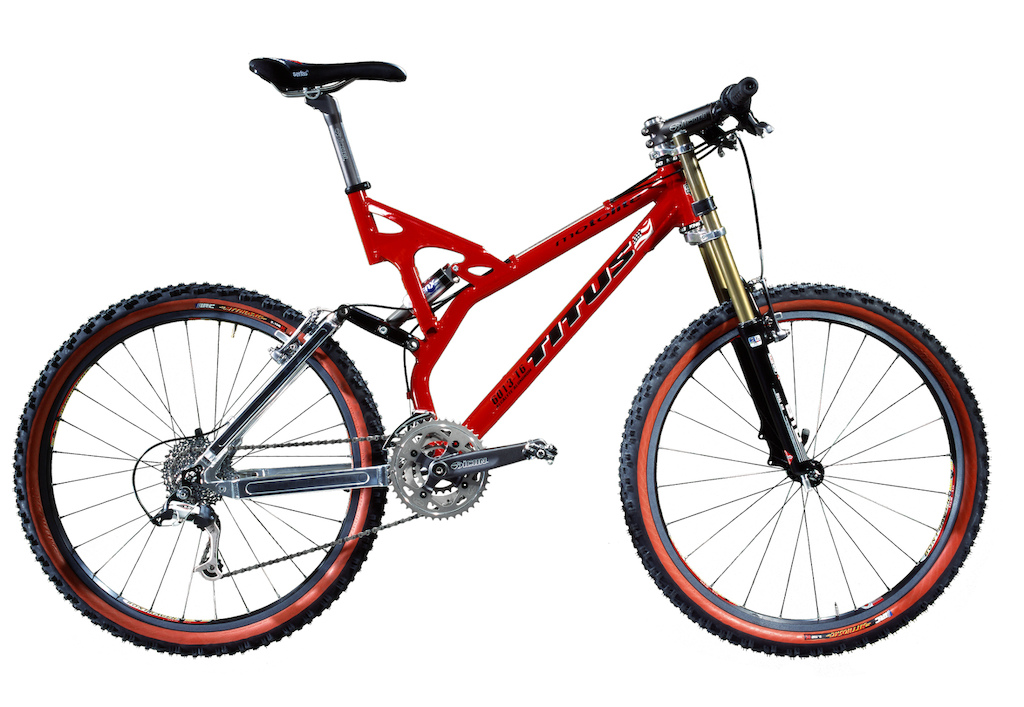
Chris's BMX racing experience and an obsession with off-road motorcycles fueled his inspiration to pioneer the sport's seminal long-travel trailbikes. With its "groundbreaking" four inches of suspension travel, the 1998 Titus Moto Lite was not well understood by the media at the time, but it quickly found a niche among hard-core trail riders who would eventually found the all-mountain category. Chip Simons photo
I have always focused on chassis stiffness as a key driver in our designs and also on the actual shock tuning and damper performance. These are two things that did not really seem to exist in the market early on. It seemed like everyone was willing to make every compromise under the sun just to have a wheel that moved up and down. I always take a more balanced approach so that we are not taking one step forward and three steps back when developing a new product. Any technology we implement and add to a bike (then and now) has to take the performance to the next level while not taking away from somewhere else. I think both our customers and the magazine editors appreciate our very thorough and detail-oriented approach to the entire bike design regardless of what category of bike that we are developing.
 When did you decide to have bikes made outside of your factory and how did you make that decision?
When did you decide to have bikes made outside of your factory and how did you make that decision? It started at Titus. We made everything in-house, but the process was really set up for smaller volume titanium and custom frames. Titus was good at making really nice production aluminum frames, but when it came to achieving higher volumes, we just did not have the capacity and process in place to do both custom titanium work and higher volume aluminum frames. I had developed a single pivot aluminum model called the Loco-Moto. It had a similar wheel travel path to the Horst-Link designs and an adjustable shock angle so you could easily change the suspension rate to something more or less progressive depending on how you wanted to use the bike. It was going very well for us as it was a great working design at a nice price point, but we could not deliver enough, so I went to Anodizing Inc. in Portland. We had a lot of issues with their production and it did not go well at all, so we took the bike back in-house and re-thought things a bit.
About that time I made my first trip to Asia and through some contacts decided to try one of our lower volume models there. This time, I took the approach of having no time-line on the project. We planned from the beginning to build this frame in house while simultaneously working on the project in Taiwan. If, at some point we were able to get it going in Taiwan, then we would do so only if we could get the quality where we needed it. I was never able to get it to what I considered to be a Titus level of quality, but I learned a lot.
The next step was to try a new model at Kinesis USA (a Taiwanese owned company based in Portland at the time). With my previous experience, we did the same thing and started production in-house while working with Kinesis on the same model. This, combined with my previous learning experience, helped to make this a really successful project for us, and almost doubled the size of Titus that year. However, after the first couple of deliveries, Kinesis Taiwan chose to shut down Kinesis USA and we had the option of pulling the project back in-house or transferring the project to Taiwan. We transferred it to Taiwan and this was really when Taiwan became my second home. It was not an easy transition but it was an exciting one and it turned out to be great timing as this is when the sport was really shifting.
Although Taiwan was already the epicenter for the bicycle industry, it was only known for mass production and not so much for high-end, cutting-edge product. I was there to see and help shape how production methods evolved, so that truly world class product could be built there. Taiwan already had the world’s best bicycle technology for tube forming, heat treating, finishing, etc - plus welders with more experience than just about anyone else in the world. There were also vendors outside the bike industry in the automotive and medical fields that we could tap into in Taiwan that are simply not available in the US. What the Taiwanese manufacturers lacked at the time was process and tolerance control. Their mentality was price and quantity driven, which is important, but cannot trump everything else. Fortunately, driving quality, process controls and instilling the mindset of constant improvement is something that my team and I are really good at.
 Where are your bikes made now?
Where are your bikes made now? We still have our bikes made in Asia but the process has evolved from what we did at Titus. We have a full machine shop and manufacturing capabilities in-house in Tempe to support engineering, product development and to prepare a product for manufacturing. We actually have much greater control over the out-of-house processes now than in the Titus days. We manufacture a fair amount of the production tooling, gauges and fixtures in-house and transfer them to our vendors for use in production. We spend a lot of time in the factories developing the process.
With our aluminum frames, for certain parts of the frame, we even go as far as to define the tacking and welding order. For an alloy model, it is not uncommon for Pivot to run the first 50-75 frames in-house to ensure that the process is dialed in. We even supply a special proprietary weld rod out of the US that makes for a stronger, smoother weld. The material is about 5 times more expensive than the normal weld rod used in Taiwan, but it is just one of the many things that creates a better frame and sets Pivot apart.

Designer Kevin Tisue testing bikes on the Javelina trail near South Mountain. South Mountain and the famous Arizona National Trail are literally in Cocalis' back yard. If you want to get rowdy, it's one of the top five trail systems in the US.
 You have always been on the vanguard of materials - beginning with steel, moving to titanium, mixed Ti and carbon, became one of the top innovators with aluminum frame design and then transitioned to carbon. What drives your choice of material?
You have always been on the vanguard of materials - beginning with steel, moving to titanium, mixed Ti and carbon, became one of the top innovators with aluminum frame design and then transitioned to carbon. What drives your choice of material? Most people don't know this, but my original Titus partners (Mark and Larry) came from working at Allied Signal Aerospace in their Garret Engine Division's material testing lab. They were testing materials that the commercial sector has still not seen to this day. All our weld staff early on were also welders from this lab so we had a unique set of skills within our facility and oftentimes took on projects testing materials for outside firms both in the aerospace and bicycle industries. I’ve been involved in the development of different titanium materials and processes (forming, casting, etc.), high strength steels, testing of different aluminum alloys as well as metal matrix materials and finally, carbon molding and development of technologies like Isogrid™ and Exogrid™.
 | My partner Larry used to say that there were no bad materials, just bad uses of materials and this still governs my general philosophy to this day. |
I am fortunate to have seen both good and bad uses of many different materials. My partner Larry used to say that there were no bad materials, just bad uses of materials and this still governs my general philosophy to this day. When we launched with our first Pivot models in 2007, we did so with aluminum even though carbon was definitely the hot thing and everyone was starting to do it. However, those first carbon bikes kind of sucked. They weren't really lighter than a well-executed aluminum frame and they certainly were not stiffer or stronger. At the time, I felt that aluminum had not yet achieved its full potential and carbon had a ways to go before it was really a legitimate option for a full-suspension bike. When we did develop our first carbon bike (the Mach 5.7 Carbon), it took a long time but we did achieve all our goals of being a lighter, stiffer and stronger version of the aluminum bike.

(Top Left) Designer Kevin Tisue and Chris Cocalis have worked together for 13 years. Kenny Bennet (lower left) has been building bikes almost since day one at Pivot. The lion's share of the work done at their headquarters is design and marketing, assembling bikes, and shipping, but almost a third of the building is set aside for prototyping and testing.
 You were driving aluminum frame design there for a while, with heavily manipulated tubing, two-piece welded forgings and super lightweight frame journals - innovations that are standard fare now. What are you most proud of from that era?
You were driving aluminum frame design there for a while, with heavily manipulated tubing, two-piece welded forgings and super lightweight frame journals - innovations that are standard fare now. What are you most proud of from that era?I am most proud that we were able to move the sport forward significantly with the launch of Pivot at Interbike in 2007. That first Mach 4 and Mach 5 featured technologies, innovation and integration that had never been seen before. We took a look at the bike as one unit and not just a frame that you bolted a group kit to. Within just a couple model years, everything changed with everyone's bikes. It spurred the next level of innovation. Together with our partners, we developed the Press Fit 92 BB standard and the idea of a direct mount front derailleur, both of which make designs possible today that were not previously possible.
 Why did you leave Titus when it seemed to be at its zenith as a mid-sized bike brand?
Why did you leave Titus when it seemed to be at its zenith as a mid-sized bike brand? I merged Titus with a composites company called Vyatek in 2001. We had investors and technologies that really made this look like the thing that was going to take Titus to the next level. The deal seemed to offer my growing family and I the promise of financial stability that I had not previously had as a small business owner and the potential to really do some next level carbon development. Unfortunately, it did not work out as planned and the controlling partner had put Vyatek in a bad financial situation and had ideas for Titus that did not bode well for the long term health of Titus. In 2006, I was at the tail-end of a five-year agreement and had a clause that allowed me to be bought out if I left the company. It was a tough decision and a very rough time in my life, but for many reasons it was the best option out of a lot of really bad options to sell my ownership and leave the company that I started in college. I was mentally crushed when I left Titus but fortunately my wife, friends, business colleagues and even customers, really lifted me up.
 So, you had a couple of years in your non-compete clause to figure out how you were going to compete again. What did you decide to do differently when you founded Pivot?
So, you had a couple of years in your non-compete clause to figure out how you were going to compete again. What did you decide to do differently when you founded Pivot? I had a one year no-compete. I left Titus at the end of June, 2006 and then we launched Pivot at Interbike 2007. In some respects, (from a product standpoint), I treated this like just another model year. It was not uncommon for us to develop three new models at Titus in a busy year so this was similar but we also had to start a new company at the same time. The biggest difference was having a fresh business plan and a clean slate. We were not tied to anything. The details of everything we did differently would fill a book, but the biggest difference was having a road map. I started Titus in the garage while attending school and managing two bikes shops. I grew Titus out of hard work, stubbornness, and a pure sense of invincibility. I probably made so many mistakes that I was too young and dumb to know I even made. Eventually, Titus was a successful bike company built on hard work and personal credit card debt. Pivot, on the other hand, had a strong plan and a small team of extremely hard working perfectionists at the start, so we were able to start from a higher level and execute it successfully from the beginning.

Chris launched Pivot with the aluminum Mach 4 and the switch to a dw-link rear suspension configuration. The prototype is on display at the factory.
 When you started with Pivot, you abandoned the Horst-Link and worked with Dave Weagle to develop a dw-link rear suspension. Now that you have had extensive experience with the two most iconic four-bar-suspensions, tell us the strong points of each design.
When you started with Pivot, you abandoned the Horst-Link and worked with Dave Weagle to develop a dw-link rear suspension. Now that you have had extensive experience with the two most iconic four-bar-suspensions, tell us the strong points of each design. For starters, I am a big fan of both. However, when you look at the overall design and each of their capabilities and potential, I feel the dw-link is the next level. In general, short dual link bikes have a higher degree of complexity in design and certainly in manufacturing, but the designer has the ability to change the wheel travel path at different points in the travel. It does not need to be a constant arc (which is basically what you get with Horst-link design). This allows us to look at how the suspension behaves at different points in the travel and in different conditions. The Horst-Link is awesome because of the fully-active braking and the openness of the design. There are so many ways to design a reasonably good functioning suspension frame with that design. It is easy to manufacture as well. It is the reason why there are so many of this type of design globally.
With a short dual-link design, we have the capability to match the performance characteristics to be nearly identical to that of a Horst-link design, if this is what we chose to do. However, we also can go beyond that. During my time between Titus and Pivot, I had the opportunity to ride a lot of different bikes. I spent time testing bikes from Santa Cruz, Ibis, Specialized, GT I-drive, Maverick, etc. All of these bikes had cool features, but they also all had certain characteristics that weren't as appealing to me. My goal was to take the best of what I had developed at Titus and the best characteristics of the other bikes I had ridden.
The dw-link design offers this versatility. Dave Weagle and I worked hard to achieve all my goals from the beginning and further refine the characteristics as we've developed new models. The three biggest differences between the Horst-Link designs and the dw-link are the ability to have better square edge bump performance. With a more rearward wheel trajectory at the beginning of the travel, riders can hit stuff harder and maintain momentum better.
The second is the frame stiffness. Stiffness is something that we (Pivot) really focus on. I believe that even the world’s best suspension design won't work well if the frame is flexing in other places. We really work with Dave on getting the links as short as possible within the constraints of the overall design and to make the pivots as burly as we can. Combined with the one piece rear triangle, we can achieve a higher level of frame stiffness than other designs that have pivots separating the chainstays and seatstays. The last item is anti-squat. This is a concept 100-percent developed and patented by Dave Weagle and it’s really the icing on the cake.
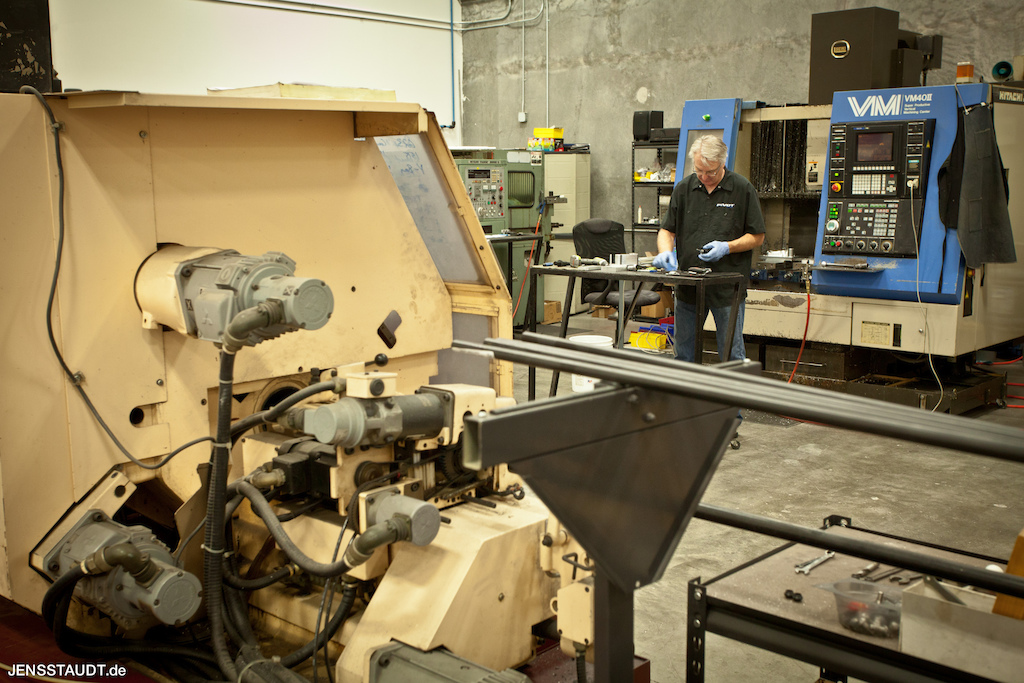
Mastermind Bill Kibler programs and operates the computerized machining centers at Pivot's prototyping shop. Bill works his magic, popping out anything from specialized hardware, production parts, and complicated molds, to many of the forming tools used to shape aluminum parts.
 You have always maintained a fully equipped prototype shop where you build frames, assembly fixtures, and various parts. How does that play to your advantage?
You have always maintained a fully equipped prototype shop where you build frames, assembly fixtures, and various parts. How does that play to your advantage? It’s a huge part of what we do and certainly one of our competitive advantages. On some models, we could go through as many as five separate prototyping runs to get things tuned in exactly how we want it. If we had to send drawings off and wait, it could take us two years longer to get through the process. When we control the prototyping and development process, it allows us to do it exactly as we envision and to see any potential roadblocks early on. It also enables us to constantly push the boundaries of what is possible. When you are trying to push technology and generate new ideas for tomorrow, you hear the word NO a lot. The number of times we have heard that something is not possible is staggering. With our shop in Tempe, we can make it happen. We have the ability to prove that our ideas are possible, test them and then educate our vendors on the process as well.
(Clockwise) Sean Kennedy begins to assemble a front section on an adjustable fixture that has seen many prototypes. The forward swingarm junction is made in two hollow halves which are then welded together. A left-side chainstay and dropout being fitted to the swingarm fixture.
 Your wife Cindy, has played a part in your success, and has been a full-timer since Pivot. How does that work out?
Your wife Cindy, has played a part in your success, and has been a full-timer since Pivot. How does that work out? It works great. I am at one end of the building and she is at the other so she doesn't have to see me too much if she doesn't want to (just kidding, Cindy). Cindy makes me look good and it’s nice to have someone with the same goals and vision working with you. I travel a lot, so her close involvement also gives her a better understanding of what's going on all the time. It keeps us connected. We met through cycling while we were in college and have really grown up doing this together. She keeps asking me to fire her, but I don't know what I would do without her. It turns out that that marriage certificate is a pretty powerful document, so she is kind of stuck with me.
 You spend a huge amount of time chasing down details in Asia, and yet you seem to be a family man. How do you juggle the two?
You spend a huge amount of time chasing down details in Asia, and yet you seem to be a family man. How do you juggle the two? I do the best that I can. Cindy is the super mom and I support everyone in what they are doing. I have two awesome boys that are doing great in school and they are talented athletes. I certainly wish I could do a better job at being two places at once, but one way or another, we make it work.
 You have been a moto rider since I can remember. How has that influenced your designs?
You have been a moto rider since I can remember. How has that influenced your designs? On the technical side, when I get a new dirt bike, it’s kind of like buying an entry level mountain bike in that it's put together acceptably but if you ride it hard, parts will not hold up or run as well as they would if more time had been spent using proper grease in the bearings and adjusting everything perfectly from the beginning. So, my new dirt bike ritual is to take the bike apart and rebuild it before it sees it first ride. In some cases I have been amazed by the engineering and in others, I scratch my head and wonder what they were thinking. The mechanical knowledge is extremely helpful and over the years, I have implemented some ideas into my bike designs that were inspired by things I have seen on the moto side.
 | Newer motocross bikes are more compact and a little steeper up front. New bike designs are longer, lower and slacker. When I am descending a technical trail on my KTM, the position and feeling is not so different from how I ride my Mach 6 in similar conditions. |
As far as the riding influence goes, I used to consider them two different beasts with the only crossover being that the higher speeds on the moto resets your baseline on the bike so that you feel comfortable at higher speeds. However, current bike design for DH and Enduro are starting to feel a lot like current motocross design. Newer motocross bikes are more compact and a little steeper up front. New bike designs are longer, lower and slacker. When I am descending a technical trail on my KTM, the position and feeling is not so different from how I ride my Mach 6 in similar conditions.

One half of the mold for Pivot's Mach 5.7 Carbon rests above the molds for the right-side of the swingarm. Each frame size requires its own front-triangle mold, which cost upwards of $50,000. If you want to play the carbon game, you need to have all of your ducks in a row before you get started.
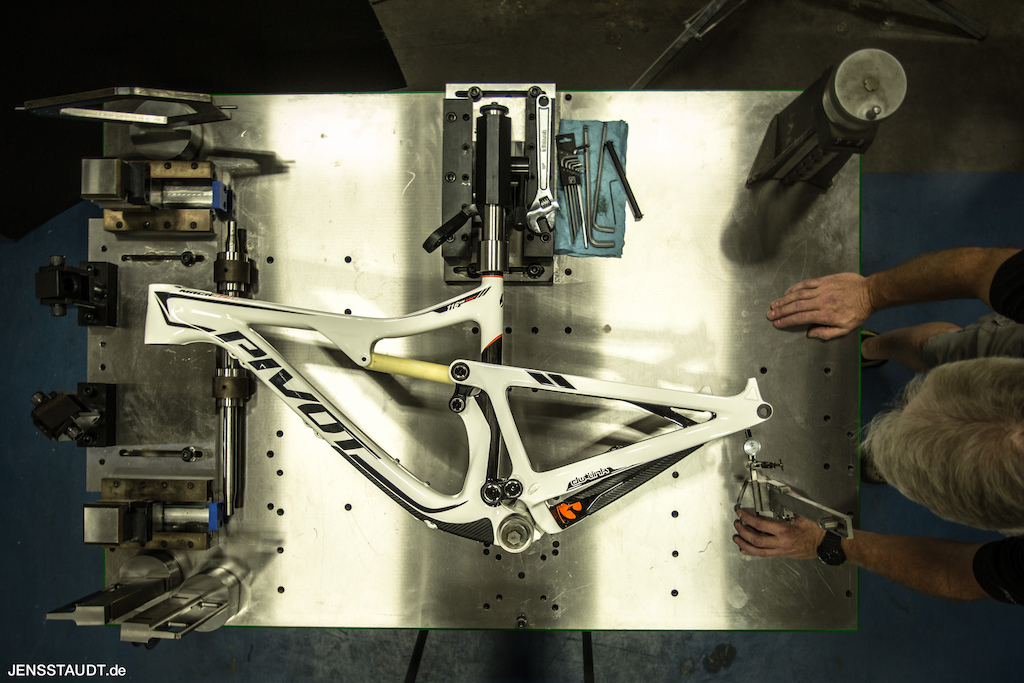
Scrutinizing a Mach 429 chassis. Measuring the alignment and accuracy of production frames is an ongoing process used to double-check the quality control standards which have been put into place at Pivot's suppliers.
 With the prices of high-end carbon bikes nipping at $10,000, and with carbon out selling and outperforming all other frame materials, where is the game heading? Are there new manufacturing technologies coming down the pipe that will reduce the cost of carbon and bring prices within reach of rank and file enthusiasts, or are we going to have to buck up and spend what it takes?
With the prices of high-end carbon bikes nipping at $10,000, and with carbon out selling and outperforming all other frame materials, where is the game heading? Are there new manufacturing technologies coming down the pipe that will reduce the cost of carbon and bring prices within reach of rank and file enthusiasts, or are we going to have to buck up and spend what it takes? I think to some extent, if riders want the latest, greatest, they just need to buck up. Carbon material pricing is relatively stable right now, but it will only go up in price. There are gains being made in manufacturing efficiencies but they are not earth shattering and they are not outpacing the cost of labor. Making a high quality, cutting edge carbon frame is a complex process with a lot of hand labor. At this point, there is no way around it. There can be some cost savings through design and using more cost effective composite material but in the end it’s just a balance between price, quality, weight and stiffness. I do believe that carbon rims will be more cost effective in the future as this process can get automated quite a bit more then it is now. As for other technologies, aluminum is not dead. I see promising things for aluminum in the future.
 PIvot recently released an aluminum version of the Mach 6. Is that what you are referring to?
PIvot recently released an aluminum version of the Mach 6. Is that what you are referring to?Yes. Aluminum is not dead. The challenge now has been to take aluminum to the next level while also bringing the cost down. The original Pivot aluminum frames set new standards for aluminum construction and how frames are fabricated, but they were complex and expensive. As we progress, it's really important for us that the technology remains accessible to a wider range of riders. We have been working on what we consider to be the next generation of hydro-forming. The idea is not just to have fancy shaped tubes but to bring what has been developed in terms of structure and shape (internal and external) from the carbon frames to aluminum. This includes higher strength and stiffness with only a small increase in weight.
 There is an acute technical labor shortage happening in China, and Taiwan factories running at full capacity, where will the next carbon assembly factories be located?
There is an acute technical labor shortage happening in China, and Taiwan factories running at full capacity, where will the next carbon assembly factories be located? It's interesting. The factories that are doing it right are at capacity and the factories that are not willing to make the adjustments to where things have moved are suffering with too much capacity. Still, the big companies are always looking for how to save another two or three percent on their costs. A lot of it is driven by which countries the EU hands out favorable duty status to, and which countries have the most stable political and business environments. Along with cost to manufacture, these are the things that seem to drive the move to different countries. Vietnam, the Philippines, and even Myanmar are potential developing countries for bicycle manufacturing. For Pivot, our product is 100-percent technology and engineering driven. We will produce where we can build the best product. We are not the company that is going to jump to the next country that can offer us the lowest price. It’s just not in our DNA.
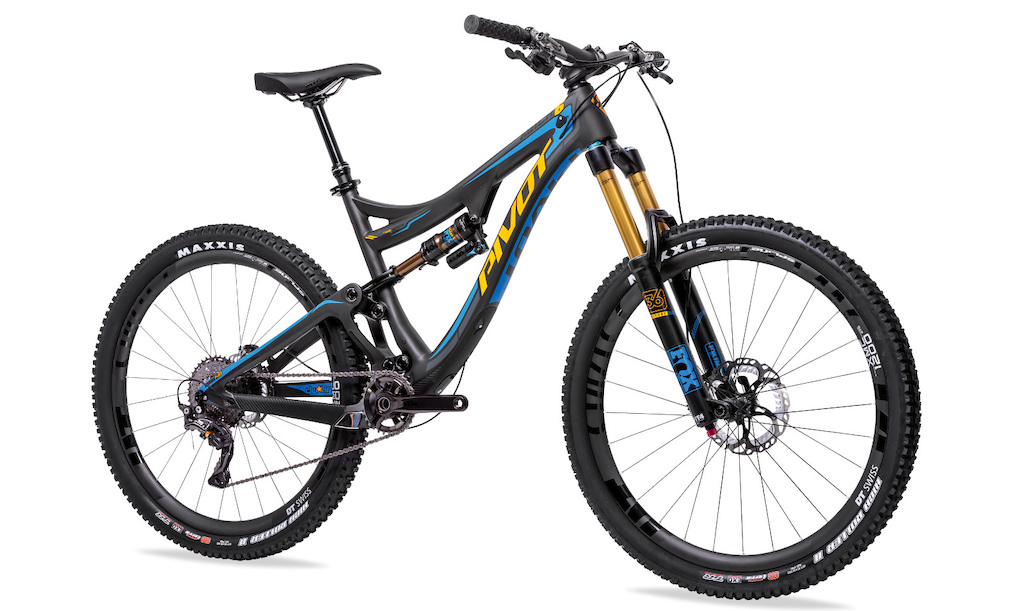
The Mach 6 Carbon currently represents everything that Pivot has been working towards in its quest for the ultimate trailbike: light weight, durability, efficient pedaling - and a handling package that can roll shoulder to shoulder with all-out enduro racers. Pivot image archives
 It seems like there is no advantage for a larger bike brand versus a company like Pivot when it comes to top-performance carbon frames. Both are made off shore in limited quantities and the costs seem to be the same. What is the prognosis for medium-sized bike makers like Pivot, competing with the big brands in the future?
It seems like there is no advantage for a larger bike brand versus a company like Pivot when it comes to top-performance carbon frames. Both are made off shore in limited quantities and the costs seem to be the same. What is the prognosis for medium-sized bike makers like Pivot, competing with the big brands in the future? I think that we are at a really nice size to compete at the high end. We are big enough to fund the innovation and nimble enough to make changes relatively quickly and (hopefully) stay on the leading edge. We also have a highly knowledgeable engineering and manufacturing staff of a size and quality that rivals or exceeds the best in the industry. This enables us to innovate in ways that many others may not be able to. When it comes to the high end product, most bike companies just don't have the engineering staff to focus on this properly. In the companies that do have the expertise, it’s still usually just a couple of really knowledgeable people driving the innovation for a really wide range of products. If we continue focus on what we do best, we hope that riders will see the level of product that we bring to the market and experience performance that takes their riding enjoyment to a new level regardless of their ability or segment of the sport they choose to participate in.
 If you could push a button and have one thing disappear from the bicycle industry, what would it be?
If you could push a button and have one thing disappear from the bicycle industry, what would it be? We all know the bicycle industry is perfect just the way it is. However, if we could do away with the wilderness designation in the US, open all rideable trails that are currently open only to hikers and horseback riders and grow high-school mountain bike racing to have the highest participation rate of any high-school sport then, that would be something. Am I really asking for too much?
 Has technology advanced to the point where we will only expect smaller, evolutionary changes to the mountain bike? Where do you see room for significant improvements?
Has technology advanced to the point where we will only expect smaller, evolutionary changes to the mountain bike? Where do you see room for significant improvements? Richard, we’ve both been at this since before the dawn of the suspension bike and I cannot flat out say that there has never been a time with more innovation then right now. However, there is a lot going on right now and biggest difference between then and now is that most of today’s new ideas actually work, where at the beginning, most of them didn't. When you are in the middle of it, it seems evolutionary but then you look back over a three, five, or ten-year period, and things have changed so much that it’s really a giant leap. There weren't "enduro" bikes or 27.5-inch suspension bikes just three or so years ago, and the mountain bikes we are riding 3-5 years from now won't be like the one we have today. New suspension technologies, new categories, electronics, and maybe even a dropper post that lasts as long as the best suspension forks may even be in the cards.

Cindy and Chris Cocalis met at a bike shop. Chris proposed to her on a trail ride, so it's safe to say that mountain biking is in the family blood. Cindy helps take care of the business end of Pivot Cycles.
 Looking back, what accomplishment are you most proud of and is there a moment that you wished had gone differently?
Looking back, what accomplishment are you most proud of and is there a moment that you wished had gone differently? I am most proud of my kids and my family. Within the sport, I am most proud to have been a key part in shaping the sport and what people ride today, but even beyond that, the highest level of accomplishment is seeing how excited customers are when they get one of our bikes. It changes their riding experience and life in a positive way. As we grow, it’s awesome to see that excitement grow along with it and it drives us to do even more things that build on this.
Overall, I am pretty damn lucky. There are a couple big moto wrecks that I would certainly like to erase from my history and there are always going to be bumps in the road, but changing anything in the past would radically change where we are at today. I am really happy with what we've accomplished and look forward to the future.
MENTIONS: @pivotcycles / @grinsekater
Author Info:
Must Read This Week
[UPDATED] Final Elite XC Results & Overall Standings from the Mairiporã XC World Cup 2024
41757 views
41757 views
Sign Up for the Pinkbike Newsletter - All the Biggest, Most Interesting Stories in your Inbox
PB Newsletter Signup

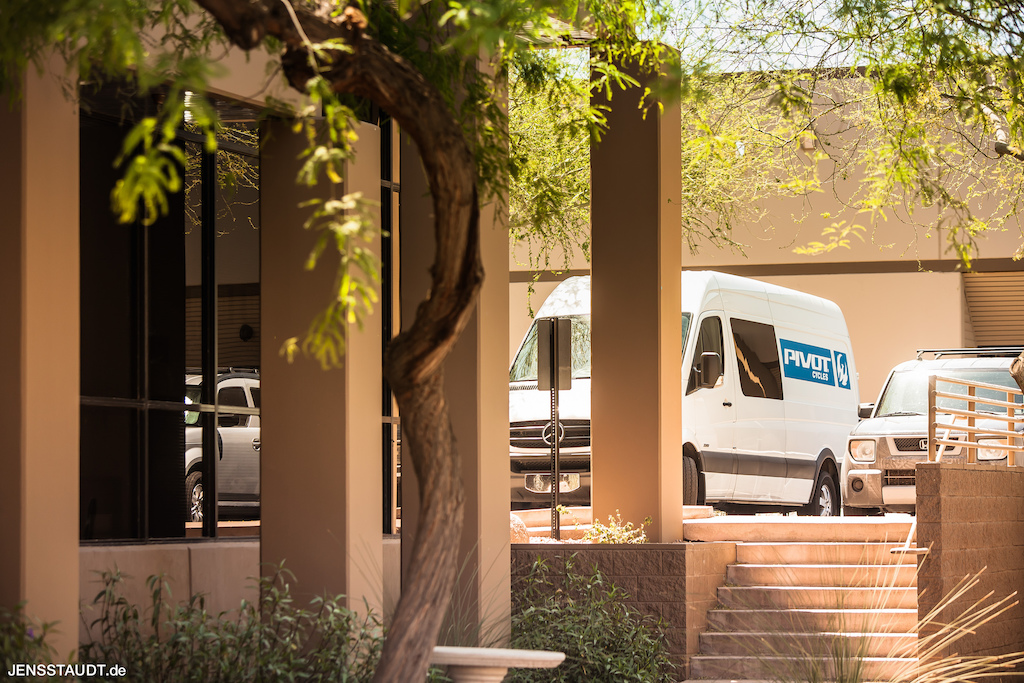
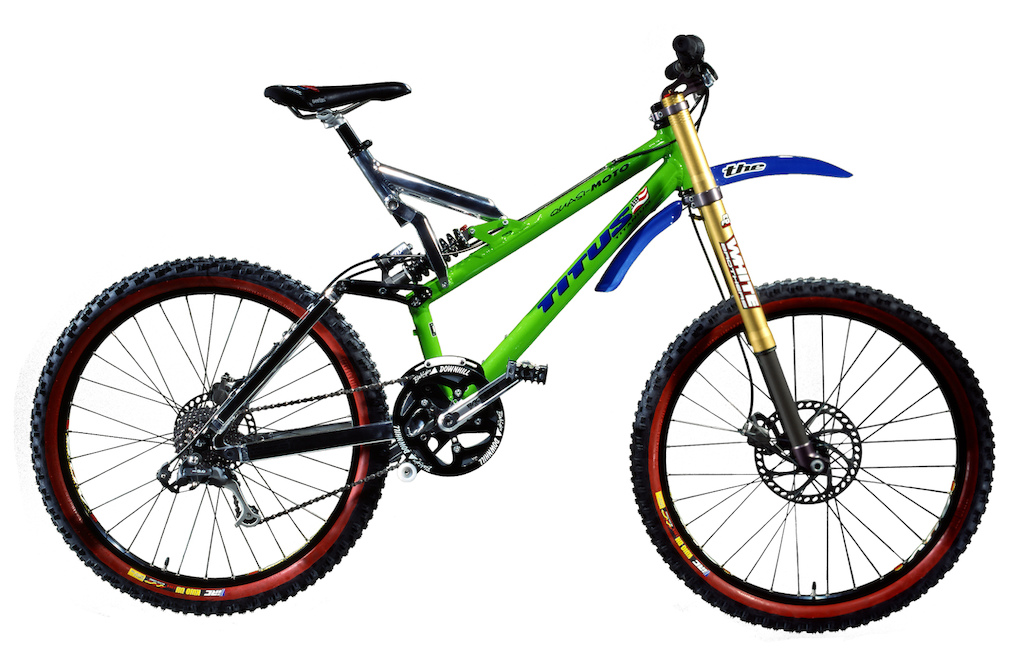
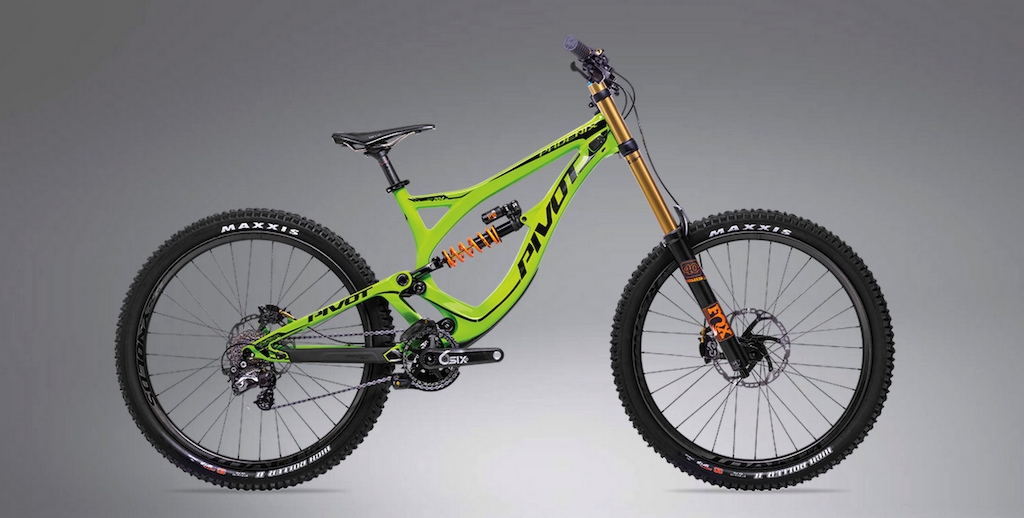
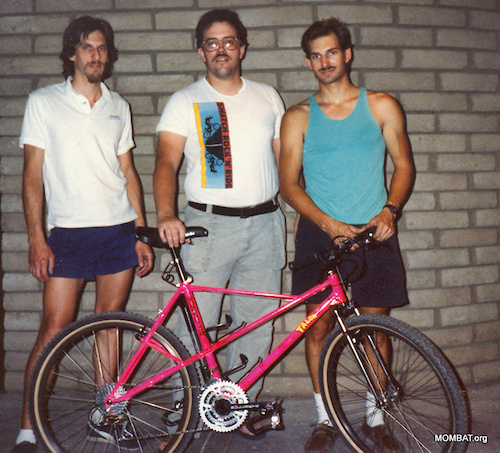
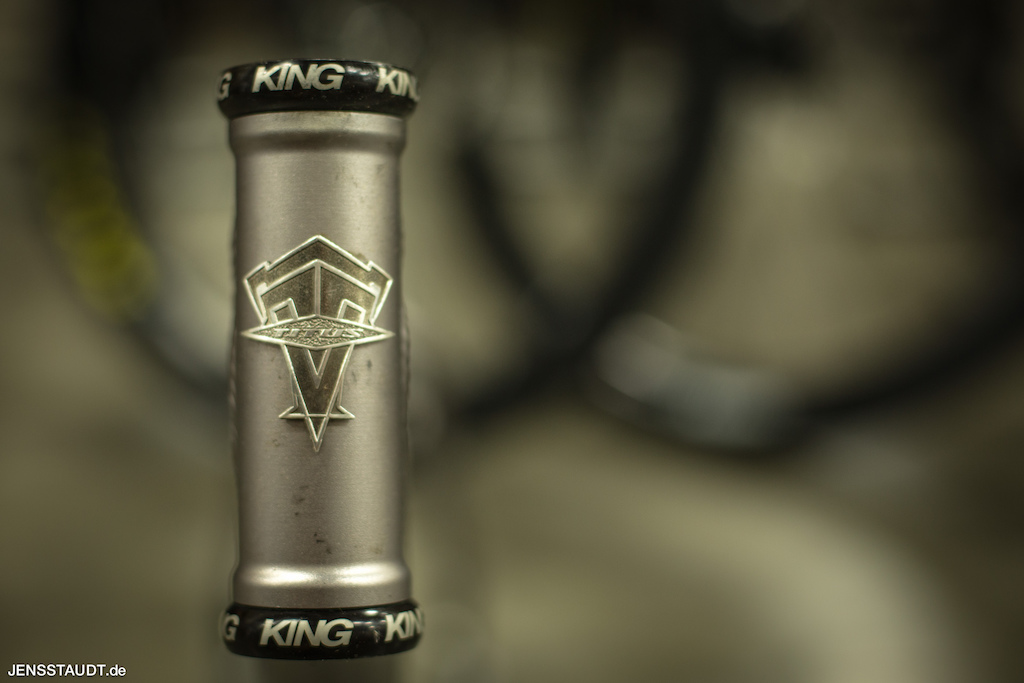
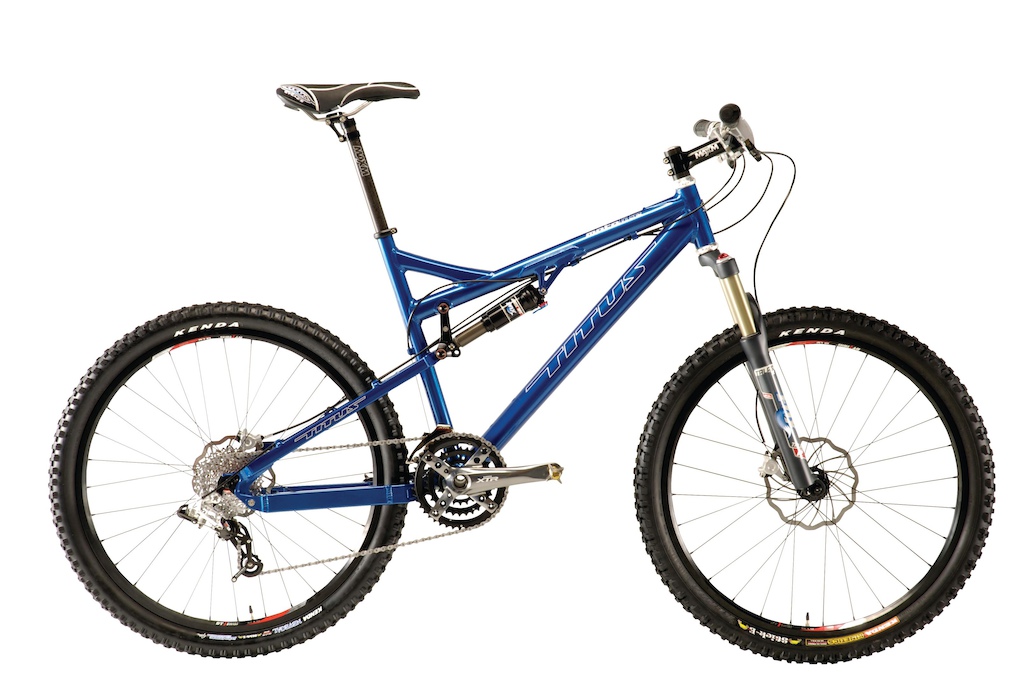


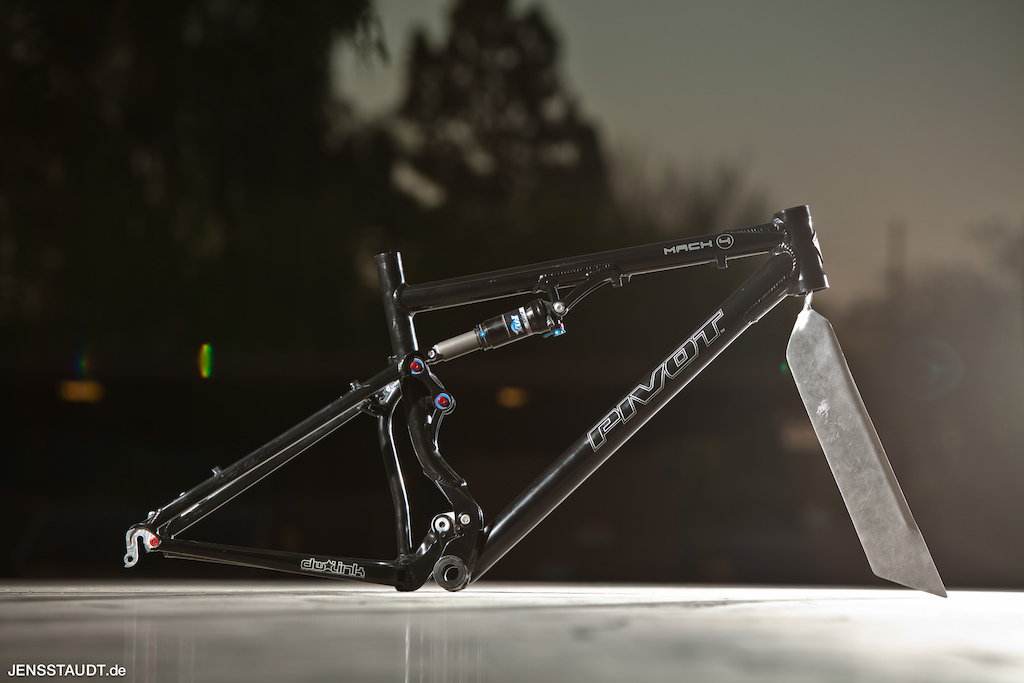

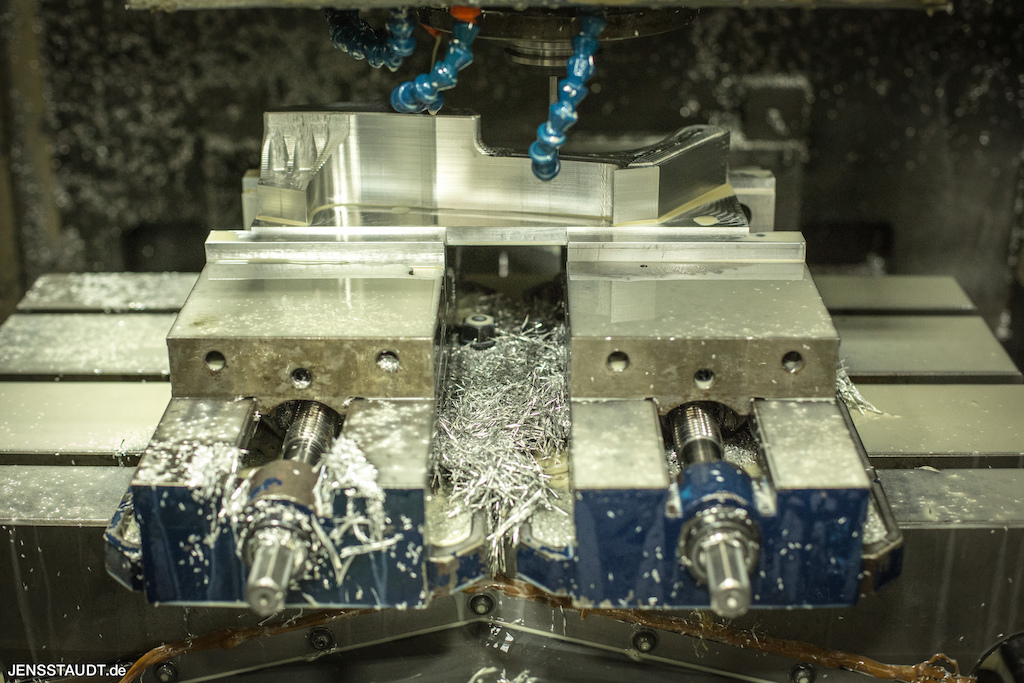

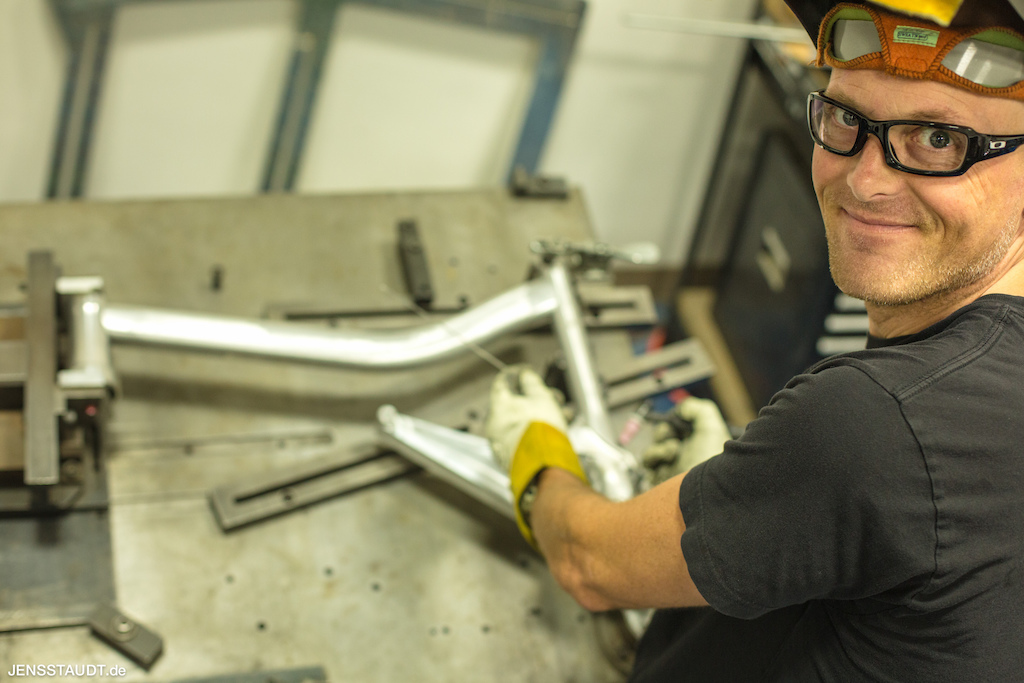
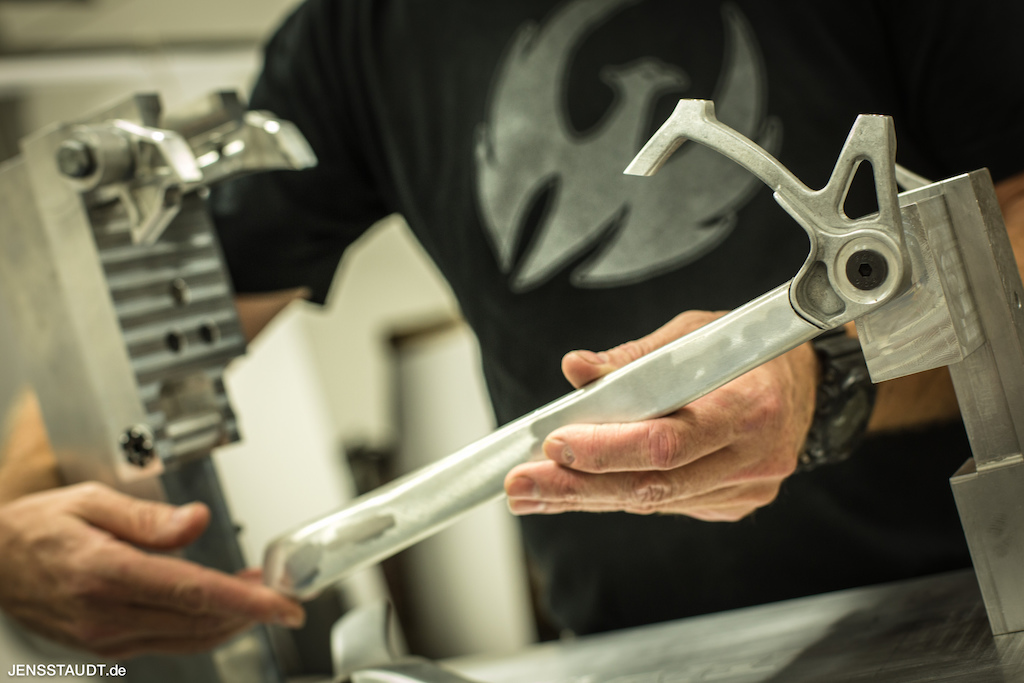
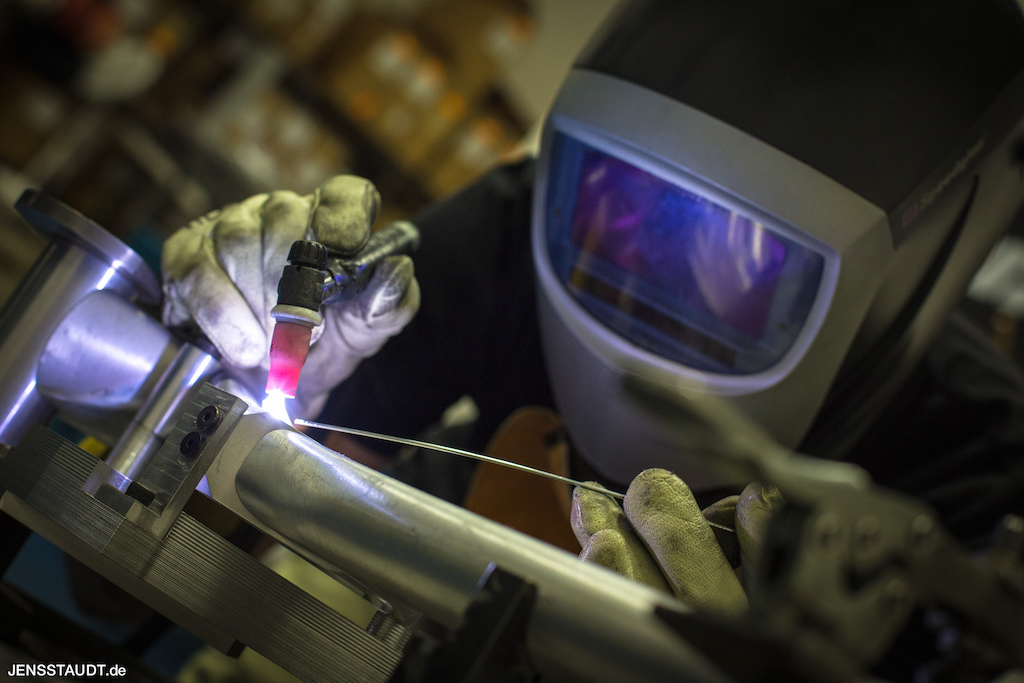

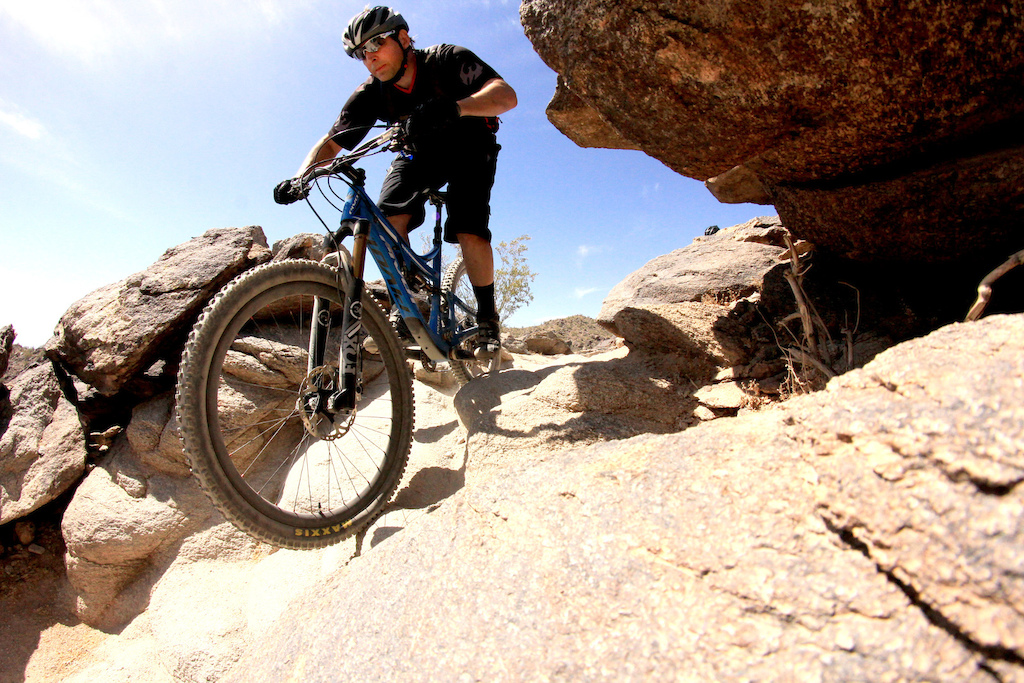

The other day I test rode a current model Mach 6, pretty much the same as the one pictured here. Same drivetrain as mine, same brakes, same tyres. The two bikes pedalled about the same, but, straight off the bat, the Pivot handled better. Not by much, but clearly better. Reading this article, it's now not such a surprise...Well done to Chris and Co.
www.pinkbike.com/video/424102
get some.
In 2007, the Kona Coilair, not the most advanced or expensive bike out there, had
65.7 degree HT,
439mm chainstays,
347mm bb height,
160mm travel.
Sure, bikes have gotten better, but 650b and boost are a negligible increment with little real world benefits
It's 3 years ago when "cool" brands approved and refined the idea.
We were even doing 1x and 2x drivetrains, short stems, and big tires before they were "enduro" and "cool" as well.
The "enduro" crowd won't like this, but the new long travel "enduro" bikes are just lightweight freeride bikes. Not that there's anything wrong with that.
Enduro bikes and 27.5" bikes have been around for more than 3-5 years... The industry decided to kill 26" bikes in the last three years.
And cheaper products, like press fit, are a big part of the reason why people don't like the 10k price model.
And I'm all for threaded and it would actually influence my purchase of a new frame, but I will say I am not scared away by PF anymore.
wheelsmfg.com/bottom-brackets/bb86-92/bb86-92-bottom-brackets/bb86-92-bb-for-24mm-shimano-cranks.html
But check out the actual suspension kinematics on linkagedesign and decide for yourself if the Mach 6's dw-link performs significantly different from a really high single pivot. (pro tip: it doesn't)
Key point being that, we will prey on the poor. And once that society starts to 'develop' and therefore their work force must be paid a reasonable amount the industry moves on...pretty much a reflection of the global society we live in...but sad to hear.
Bare this in mind, that person building your $3500 frame probably got 0.00001% of that on a per frame basis. Total bullshit that costs will only go up, only reason they will go up is because owners and shareholders want to make more money than the previous year. The industry has made huge innovations in manufacturing processes, out sourcing, etc etc all these things should drive prices down, so its crap that it gets more expensive.
But we're willing to pay more each year...so prices will go up.
Please, please, please educate yourself on some basic economics before you spout positions and policies that will slow the rate of growth in developing countries. The absolute number of people living in absolute poverty, defined by living on less than $1.25/day by the UN, has halved in the last 25 years despite the word population growing by two billion people. This is the most unprecedented reduction of human misery and early death that has ever happened in all of history, and it has happened precisely because of free trade and the free market.
www.who.int/mediacentre/news/releases/2014/child_mortality_estimates/en
^^^Just one sample.
Every piece of economic evidence out there shows that the world, especially the developing world, is getting better, and faster than any other time in history
www.youtube.com/watch?v=Sm5xF-UYgdg
but there are too many variables, the Chinese stock market fraud is definitely something which will affect, Mexico's GDP growth has fallen from 5% to below 2% in less than 3 years, those things affect making those milestones get delayed.
Indeed, the world has seen a significant reduction the numbers of those living in extreme poverty with more than a billion individuals living in extreme poverty being lifted to living in mere poverty or relative poverty; a reduction to 1.3 billion still in extreme poverty (20% of GP)...visit Sub-Saharan Africa things look great
My point about 'preying' on the poor does not relate to extreme poverty in any way, it relate to company’s using global wage inequality to increase their YOY profit…and making us pay more for a product. But as such a scholar of global economics @hamncheez you could perhaps enlighten us on possible solutions…ooh maybe even make some points about the links between capitalism and new slavery, afterall 95% of us are in fact wage slaves??
None of us are wage slaves. We are mortality slaves. All of us have to eat, and "by the sweat of [our] brow eat [our] bread." You have to grow food or kill it to live. How you do it is up to you, in a capitalistic society. No one forces you to work at your current job. If you don't like it, apply somewhere else or start your own business. Capitalism is an environment that allows the easiest entry into entrepreneurship. I've been involved with starting two or three businesses, and one of them even made some money! "New Slavery" is not something that exists in reality. In the West people are working less hours, at less dangerous jobs, and making more than they ever have in history. And before you start on this "1% vs 99%" garbage, if you measure income in hours needed to work to buy basic necessities for the median wage earner in Western developed countries it is mind blowing the changes in well being from even just our parents generation.
At the start of the industrial revolution, not even 200 years ago, 9 out of every 10 americans had to be engaged in agriculture to live. It took 9 people to grow enough food to feed one additional person. Now the number is 1 in 50 and falling. Since the 1950s we have gotten so good at growing food that despite our increased population and appetites we have been farming less and less land every year! Imagine if it still took 9 people to grow enough food for 10! That is real "wage slavery", being a slave to nature. Working 16 hour days in the hot sun, praying you have enough harvest to feed your underfed children over the winter. Knowing if you have just one bad year, a drought or blight of some sort that you'll probably have to choose which child will die when the food runs out. That is true slavery. Not liking your office job is the furthest thing from it.
Without capitalism there would be exactly 0 mountain bikes, and the only free time anyone would have to ride would be 3 or 4 holidays a year. Without the increase in productivity that Capitalism enables weekends would not exist for the common man.
@jclnv "proportionate to the decreases in the developed world" is utterly false. It is like arguing creationism in a biology class. There is exactly 0 economic evidence for your claim. The two foundation principles of Economics is scarcity (theres no free lunch) and the gains from trade. In Africa there is next to none large scale irrigation schemes, little use of tractors and other agricultural mechanization, nearly no use of modern fertilizers, and the most hunger in the world. Should we in the West ban trade with Africa? If we don't buy their sugar, they can't sell it for as much to other Africans (poor people can't afford sugar). They can't then invest in a tractor or pesticides. They stay insanely poor. We have to pay more for sugar, so we are poorer as well. We now have to turn more wilderness into farmland, and less people in our country can be artists, doctors, engineers, or teachers because we need more farmers. We become much poorer was well.
The benefits from free trade (a lack of tariffs or import/export quotas) is the single most clearly established economic principle there is, from mountains upon mountains of empirical evidence spanning continents and centuries of time.
PS the TPP is not an example of free trade
@Narro2 watch this video (skip to about 13 min in, or watch the whole thing its great)
www.ted.com/talks/hans_rosling_at_state
I know these economic posts are long, and nobody reads them, and @WAKIdesigns likes to poke fun at me, but I think the welfare of the poorest citizens of the world is worth talking about
I think you need to revaluate your principles a little...the economic model is floored in innumerable ways. But at least you care :ø).
"After two centuries of decline, the area of US forestland stabilized in about 1920 and has since increased"
www.fao.org/docrep/meeting/x4995e.htm North American Forest Commission
" the total number of prime farmland hectares nationwide had declined from 137 million (340 million ac) in 1982 to 133 (330 million ac) in 1992"
" Between 1950 and 1992, even greater declines in farmland occurred"
landcover.usgs.gov/luhna/chap2.php US Geological Survey
In 1920, the average US industrial wage was $.50, and 3 pounds of chicken was about $1.17, so about 2.4 labor hours to buy (and the quality was lower; much more likely to give you food poisoning, etc)
In 1997, the average industrial wage was $12.50 and 3 lbs of chicken was $2.99, or .25 labor hours
Prices, measured in wage-hours worked for the average industrial US wage earner, have fallen off a cliff. This is the same for newspapers (a major purchase item and extremely important part of everyday life up until a decade ago), food, clothes, shoes, and nearly everything except cars, houses, and education. However, cars are far safer, last longer, and are more powerful/comfortable than ever, so the direct price comparison isn't accurate. Computers and smartphones, the two things that we as rich westerners spend the most hours of our day on didn't even exist in a usable form when our parents were growing up. Houses, on average, have grown in square footage in the last 40 years, and now are made with drywall instead of lathe and plaster, have better insulation, less carcinogenic materials, etc. Higher education is another topic altogether, and is an exception to this rule.
1-2 acres of rain forest in cleared ever second, so around one football field per second. Animal agriculture and palm oil have a cumulative deforestation of circa 600 billion m2 to date. this could go on for a long time, but have a cheeky google on the subjects. And to top it off have a read of this advances.sciencemag.org/content/1/5/e1400253.full
Moreover, go travel and see the world outside america please! You have been educated in a failed state (Chomsky!) Grow your mind!
I travelled by bike, 20km+ on three separate trips and 25+ countries: Syria, Sudan, Tibet, China, India, Nepal...just to name some poor ones
Anyway, still why does a carbon frame cost $3500?
The rain forests in Brazil and other South American, African, and Southern Asians countries are being unsustainability clear-cut, I agree, but the problem isn't as bad as most people think, but its still a huge issue of concern.
What is the solution to this? Why isn't this happening in the rain forests of the North American Pacific Northwest? Two words: Private Property. In Brazil the land is owned publicly, which is the same thing as saying nobody owns it. Politicians are corrupt and since logging companies don't own the land they can't profit off it long term, so the incentive is to clear-cut. In British Columbia, the land is clearly owned and the logging companies farm the trees, replanting and maintaining the forest because it is profitable from its exclusivity; it is private property (to some extent; with most of it leased land it does get somewhat more complex).
There are problems in the world, but they are not insurmountable. The US uses less and less land for farming because we apply insane technology to increase yields per acre. If this technology is adopted by the rest of the world, much less land would be needed to feed the world. The best UN predictions for population growth have the global population maxing out at around 10-11 billion people, and if US agricultural methods were applied everywhere LESS land could be farmed/developed to feed an 11-billion person world than we are using now, and this is assuming agricultural technology stays at current levels.
Once again, the UN's millennial goals hope to eradicate global poverty by 2030, and I think this is achievable.
same economic laws as any other goods or services. Milton was a huge advocate of free markets for healthcare.
Good health is critical for emerging economies, and is far to important to be left in the hands of a monopoly. Competition always brings about better results in providing goods and services to the masses than a monopoly.
That aside, you use statistics to try and bolster your floored arguments, please please think more broadly. The decrease in land usage for agriculture has nothing to do with improvements in technology, but everything to do with soil degradation. 'Farmers' or capitalists if we reference our earlier, will not stop using land because they can increase their yield and therefore produce enough; this is @WAKIdesigns point...the world would be a better place if it were so.
In the United States, around 140 million hectares of agricultural land has been lost in the last 30 years as a result of soil degradation and conversion for urban use...nothing to do with technology. Its life saying the rate of global deforestation is decreasing, yes it is...because there is less forest to cut down!
Anyway, this is getting pointless so lets leave it be. @hamncheez, dude you have some pretty weird views of the world!
Happy riding to you!!!
Yes US uses 'insane technology', but so does the rest of the world. Also the American soils are pretty crappy compared to Europe or Asia. So no, US farming isn't that great.
When a Monopoly exists in the Free Market, it can only maintain its monopoly status by providing exceptionally better goods and services, and even then all monopolies in a free market can never last, with extremely few exceptions. Since the industrial revolution, there have been exactly 2 private monopolies that have lasted more than a decade: Debeers Diamond Company and the New York Stock Exchange up to 1929. Every single other instance of a monopoly that has persisted has done so because of government (itself a monopoly) interference in the free market.
Evidently you are a fundamentalist of sorts and with all fundamentalist you lake the neural plasticity to comprehend that your world view/foundation is in fact totally floored...I believe the common term for this is f*cktard...but I could be getting my translations wrong there?
Sustainability is the capacity to endure; it is how biological systems remain diverse and productive indefinitely. Current farming is the opposite of diverse, modern farming is all about monoculture? its productivity if is derived from pesticides and fertilisers?
Almond farming in California is a great example of non sustainable farming from water use perspective. This really could go on for a long time...
Point 2: read your posts on economics etc
I was obviously taking the piss a points, as this is a medium of entertainment...but with that aside your arguments are so unbalanced and one sided I just had to point out some basic information that easily available. Just have read and watch some documentaries.
What is this cutting edge technology you speak of? As a farmer myself I would like to know. From what I know US has the same equipment as we have here. And please don't tell me you have better yield than any country in the world, cause It's making me laugh. Wheat yield per hectare in US is at least 2 times lower than here, in Europe! And even then we aren't leading cause there are countries which produce from a hectare even more than that! Same goes with other grains, except maybe for corn. It's so funny how you think the rest of the world is a few years back compared to the (not so) great America. Who told you all this bullshit?
'Cutting edge technology' you really made me laugh ;D
1) supply and demand
2) small volume supply
3) $50,000 moulds per front triangle
just a few of the issues I have experienced with all seven of the demo fleet I unfortunately had the joy of working on over the summer, to top of with bad customer service from there Distributer, not ideal when yous spending top doller!!
Despite the Phoenix is an amazing bike and have an incredible riding feeling it has too many flaws. I hope they can fix it.
The shock problem will still be there because of the linkage system but the frame works amazing with an air shock. If you want to use a spring choose one burly enough to last like the Ext Arma or the CCDB with the new thick stem (I just don't know how to say it in English,I mean the central piece of the shock). I broke the RC4 that came with the frame in one day in rocky terrain (pretty gnarly terrain I have to say).
Of course a modern hardtail will have a proper fork and all the other bits, but a hardtail is so capable now that I wonder about the comparison.
It's an amazing trail bike 120mm travel with no issues from UT to AZ and to BC Bike Race and much more.
Just wish it had a tapered head tube.
I can't upgrade to the better forks/dampers of today !
Yet another thing to be jealous about then.
how good would the Phoenix C look with a straighter downtube?
Another nice read.
The wife's brother owns one so I took it out for the weekend yup.
Also work in a shop which allows me to try a ton of bikes and allows me to demo bikes from other ships as well. Though it's in the top 3 I have ridden I don't own one lol. Cost has a little to do with it but mostly because its not what I look for in a bike.
But honestly bud, go find a pivot dealer and see if you can demo this bike. You will not be disappointed.